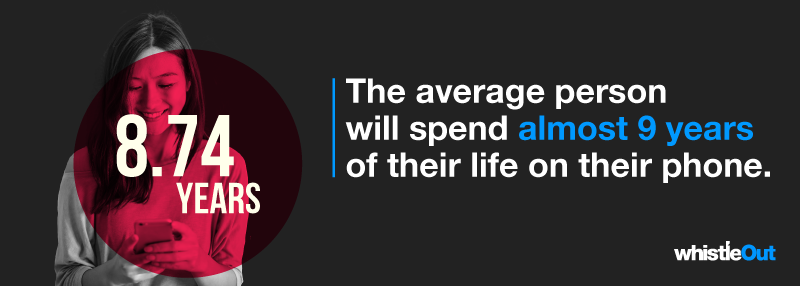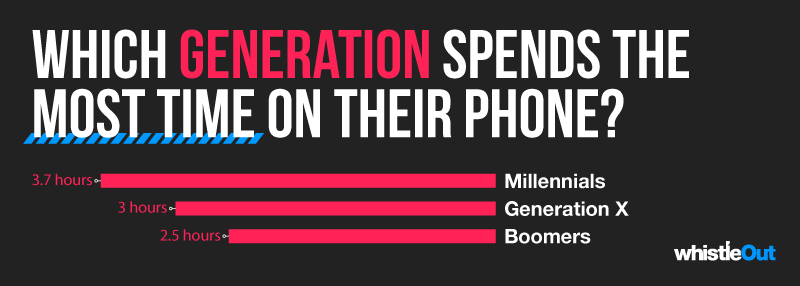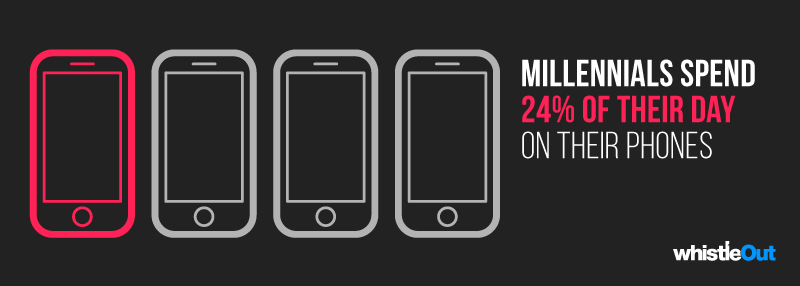This highly-informative article about different ways for you to limit screentime at bedtime was originally posted at WhistleOut, and it was written by Chris Holmes.
Article Summary
For a great many of us, smartphones screens are the first thing we look at when we wake up in the morning and the last thing we see before going to sleep at night.
Here are 5 tips for reducing or eliminating cell phone screentime before bed.
Multiple research studies have concluded that smartphone use before bed is abjectly bad for our sleep. This is because it disrupts the production of important sleep hormone melatonin and tricks one’s mind into thinking it needs to stay awake.
To help curb this, the National Sleep Foundation recommends 30 minutes of gadget-free time before bed. Before declaring this advice too difficult to put into practice, check out these five tips for emancipating yourself from your smartphone screen at night.
Listen to a Podcast Instead of Watching Video
Television and movies have been an integral part of the afterwork routines of millions of Americans for decades. However, with the advent of streaming apps like Netflix and Amazon Prime Video, it’s easier than ever to take this habit to the bedroom, and zone out on our phones while we’re lying semi-comatose.
While video watching may seem to be helping us to relax us before bed, it’s actually engaging our brains and telling us to stay alert. But there’s a way around this corrosive routine: podcasts.
With podcasts, we can get a little nighttime entertainment before drifting off without absorbing the light from our smartphone screens. There are even podcasts specifically designed to relax you before bed.
If you sleep next to a partner, the best method for taking in a podcast is undoubtedly via headphones. However, if you’re trying to keep your phone away from the immediate proximity of your bed (indeed you should be) and you either sleep alone or your partner doesn’t mind it, an alternative solution is a bluetooth speaker. Either way, you’ll be setting yourself up to fall asleep faster than you would be watching episodes of Better Call Saul.
Use An Internet Blocker
Since almost all of the stuff that keeps us up at night on our phones is coming to us via WiFi or cellular signal, there’s a very direct solution: an internet/app blocker.
With apps like Freedom, you can select which apps or websites you wish to block, and set a timeframe for doing so. Freedom and other similar apps have been popularized by writers who need to block out distractions when they work, and there’s no reason it can’t also be used to limit overall screentime before bed.
Use An Auditing App
One solution to decreasing smartphone use in general is to track our personal usage and shame ourselves into curbing it after certain thresholds have been reached. This can only help to convince ourselves that we’ve used our phone enough by the time 10pm rolls around.
There are several iOS and Android auditing apps that can help with this:
- Moment (for iPhones) gives you an overall breakdown of your usage, but allows you to set limits that, once reached, block you from using the device any further that day.
- Quality Time (for Android) serves a similar function to Moment but allows you to break down usage by app.
Put Your Phone Out of Reach
This a decidedly more analog solution than the first three, but no less effective, provided you have the discipline to put it into practice.
Totally clearing your bedroom of all devices can help you to actually follow the National Sleep Foundation’s recommendation of 30 minutes of gadget-free time before bed, and perhaps foster new habits in its place, like reading a book instead.
Try leaving your phone in a designated space in another room, and keep doing so until it becomes habit.
Use Night Mode Or Blue Light Blocking Glasses
If you simply must use your phone in bed prior to sleep, one solution for reducing screen effects includes activating night mode. Apple’s Night Shift, for example, converts the on-screen color spectrum from blue to yellow, which is supposed to be easier on the eyes and improve sleep (reports have called into question it’s actual efficacy, though).
Another solution is wearing blue light blocking glasses. There are a few on the market today; of these, the Uvex Skyper model was shown to be the most effective in tests run by Consumer Reports.
Keep in mind that neither of these solutions prevent the pulse-quickening effects of reading a worrying email or watching an exciting movie.
You’ll Spend Almost 9 Years of Your Life Staring at Your Phone
We wanted to see exactly how much time we spend staring at our smartphone screens. After surveying 1,000 smartphone users, here’s what we found.
Average Lifetime Phone Use: 9 Years

The average person spends a little over 76,500 hours on their smartphones over the course of their lifetime—which works out to 8.74 years of your life. This is based on the average age of acquiring a phone—which is now just over 10 years old—coupled with 3.07 hours of average daily use.
Daily Screen Time by Generation

Millennials spend the most time on their phones, clocking an average of 3.7 daily hours. Average daily screen time decreases as the age users increases, with Gen Xers reporting 3 hours of daily phone use and Boomers spending just 2.5 hours per day staring at their screens.
For perspective, this works out to around 56 days each year for millennials, compared to 39 days per year for Boomers.
Screen Time Dominates Millennials’ Waking Hours

When factoring out average sleeping time (which is around 9 hours), millennials spend nearly a quarter of their waking lives—23.1%—on their smartphones. Gen X again falls in the middle of the pack with 16.5% of their day spent scrolling, with Boomers bringing up the rear with 9.9% of their waking hours.
This may not be all that surprising, considering millennials were born and raised during one of the most innovative technological periods in history. Digital learning and communication tools have been available at a far earlier age for millennials than for previous generations. Similarly, many millennials find themselves in tech-centric professions that often require heavier smartphone use to perform their jobs and communicate with teammates.
Methodology & Sources
We surveyed 1000 people about their cell phone screen time, 166 of which were Baby Boomers (born 1946-1964), 270 were Generation X (born 1965- 1980), and 449 were millennials (born 1981-1996). The remaining respondents were born outside these generation age ranges. We then factored in the average number of years we own a smartphone and the current average life expectancies, and calculated them against the average number of waking hours for most adults (around 15 hours).





